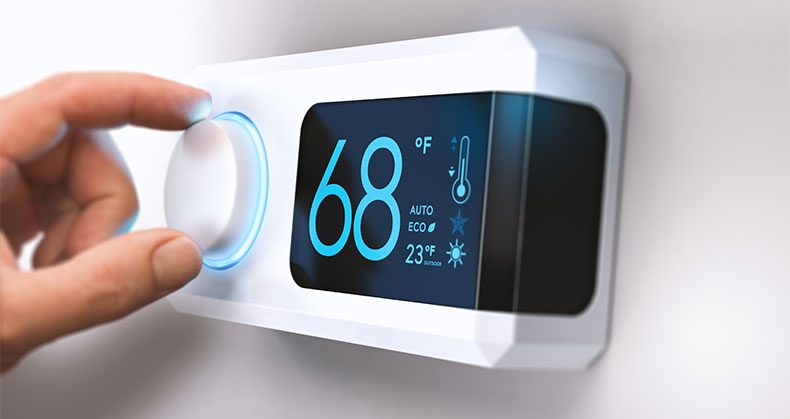There’s really nothing like North Carolina weather. As I write this, the high temperature for the day is forecast to be 67 degrees, when just six days ago the high registered at Fayetteville Regional Airport was only 29! If you’ve lived in this area for any length of time, you’re used to temperature fluctuation. You may also be used to seeing your electric bill fluctuate this time of year, increasing over the previous month. You may have wondered why that happens so I want to address the likely cause of this yearly increase and provide tips to mitigate it.
Your Electricity Consumption is Weather Dependent
The largest energy user in the average home is the Heating Ventilation and Air Conditioning (HVAC) System. If your home is all electric, the HVAC system and your water heater account for 50 percent or more of your bill monthly. During the extreme temperature periods of the winter (i.e. December- February) the HVAC system and water heater work overtime to produce heat for your home and water. Why are these systems so expensive to operate? Because their primary objective is to create heat, and when you are doing that with electricity it takes a significant amount to accomplish the task.
Resistive Heating
If you have an electric furnace and/or an electric water heater, then your primary heating sources use the process of resistive heating. Resistive heating occurs when electricity passes through a conductive material (i.e. a heating element) and heat is produced and released as a result. When temperatures dip and we begin to use our heating systems, our electricity consumption increases noticeably because these systems require large amounts of electricity to produce the heat we need. If you have a heat pump, your system consumes less electricity the majority of the winter. That is because those types of systems only employ resistive heating when the temperature outdoors falls below 35 degrees. Still, whether you have an electric furnace or a heat pump, you see an increase this time of year that gets your attention.
Solutions for Savings
The two appliances/systems we’ve been discussing have two things in common: both produce heat and both are controlled by thermostats. Therefore, the best way to lessen the impact these systems have on your bill is to maintain reasonable thermostat settings. For water heaters, the recommended setting for both the top and bottom element is 120 degrees.
For all electric HVAC system types, the recommended setting for the heat is 68 degrees. If you have a heat pump, it’s best to set the thermostat and leave it, as fluctuation could cause the unit to activate the resistive heat strips. But, if you have an electric furnace, don’t be afraid to drop the thermostat setting a couple of degrees when you leave for work in the morning, then return it to normal when you get home. Air sealing and insulation upgrades are also very beneficial.
These improvements help hold the heat your system is producing inside longer. Lastly, consider installing an insulation blanket over your water heater.
Learn more
If we can help you cut costs this winter, reach out to us at adviseguys@sremc.com.



